Triethyl acetyl citrate
Synonym(s):Acetyl triethyl citrate;Triethyl 2-acetylcitrate
- CAS NO.:77-89-4
- Empirical Formula: C14H22O8
- Molecular Weight: 318.32
- MDL number: MFCD00049378
- EINECS: 201-066-5
- SAFETY DATA SHEET (SDS)
- Update Date: 2025-03-04 13:31:24
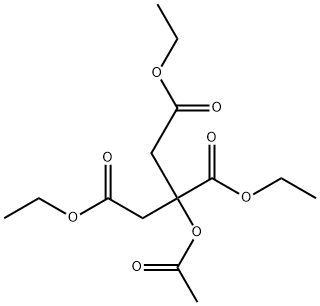
What is Triethyl acetyl citrate ?
Chemical properties
Acetyltriethyl citrate occurs as a clear, odorless, practically colorless oily liquid.
The Uses of Triethyl acetyl citrate
ATEC is produced by the reaction of citric acid triethyl ester with acetic acid anhydride. It is used as a solvent plasticizer for cellulose nitrate and cellulose acetate.
The Uses of Triethyl acetyl citrate
Triethyl O-Acetylcitrate is used in the preparation of poly(lactic) acid biodegradable and flexible films, acting as a plasticizer. Also used in the synthesis of control-release capsules containing polymeric coatings.
Definition
Aqueous-based pharmaceutical coat- ings.
Production Methods
Acetyltriethyl citrate is prepared by the esterification of citric acid with ethanol followed by acylation with acetic anhydride.
General Description
Certified pharmaceutical secondary standards for application in quality control, provide pharma laboratories and manufacturers with a convenient and cost-effective alternative to the preparation of in-house working standards. Triethyl 2-acetylcitrate is widely used in hydrophilic adhesives for medications and in biodegradable composition for papermaking and nonwoven production.
Pharmaceutical Applications
Acetyltriethyl citrate is used to plasticize polymers in formulated pharmaceutical coatings. The coating applications include capsules, tablets, beads and granules for taste masking, immediate release, sustained-release and enteric formulations. It is also used in diffusion-controlled release drug delivery systems.
Safety
Acetyltriethyl citrate is used in oral pharmaceutical formulations
and is generally regarded as a nontoxic and nonirritating material.
However, ingestion of large quantities may be harmful.
LD50 (cat, oral): 8.5 g/kg
LD50 (mouse, IP): 1.15 g/kg
LD50 (rat, oral): 7 g/kg
storage
Acetyltriethyl citrate should be stored in dry, closed containers at temperatures not exceeding 388℃. When stored in accordance with these conditions, acetyltriethyl citrate is a stable product.
Incompatibilities
Acetyltriethyl citrate is incompatible with strong alkalis and oxidizing materials.
Regulatory Status
Approved in the USA for direct food contact in food films.
Properties of Triethyl acetyl citrate
| Melting point: | -42°C |
| Boiling point: | 228-229 °C/100 mmHg (lit.) |
| Density | 1.136 g/mL at 25 °C (lit.) |
| refractive index | n |
| Flash point: | >230 °F |
| storage temp. | Inert atmosphere,Room Temperature |
| solubility | Soluble 1 in 140 of water; miscible with acetone,
ethanol, and propan-2-ol. |
| form | neat |
| color | Colourless Thick |
| Odor | odorless |
| BRN | 1804947 |
| CAS DataBase Reference | 77-89-4(CAS DataBase Reference) |
| NIST Chemistry Reference | 1,2,3-Propanetricarboxylic acid, 2-acetoxy-, triethyl ester(77-89-4) |
| EPA Substance Registry System | 1,2,3-Propanetricarboxylic acid, 2-(acetyloxy)-, triethyl ester (77-89-4) |
Safety information for Triethyl acetyl citrate
| Signal word | Warning |
| Pictogram(s) |
 Exclamation Mark Irritant GHS07 |
| GHS Hazard Statements |
H302:Acute toxicity,oral H315:Skin corrosion/irritation H319:Serious eye damage/eye irritation H335:Specific target organ toxicity, single exposure;Respiratory tract irritation |
| Precautionary Statement Codes |
P261:Avoid breathing dust/fume/gas/mist/vapours/spray. P280:Wear protective gloves/protective clothing/eye protection/face protection. P301+P312:IF SWALLOWED: call a POISON CENTER or doctor/physician IF you feel unwell. P302+P352:IF ON SKIN: wash with plenty of soap and water. P305+P351+P338:IF IN EYES: Rinse cautiously with water for several minutes. Remove contact lenses, if present and easy to do. Continuerinsing. |
Computed Descriptors for Triethyl acetyl citrate
Triethyl acetyl citrate manufacturer
Bazayan & Co.
New Products
Methyl (R)-1-Boc-4,4-difluoropyrrolidine-2-carboxylate 2,2-Difluoropropylamine hydrochloride tert-butyl 3-bromoazetidine-1-carboxylate (R)-1-Boc-3-hydroxypyrrolidine DIFLUOROACETIC ANHYDRIDE 2,2-Difluoropropionic acid Diallylamine, 99% Calcium hydroxide, 95% Aluminum oxide, basic 2-Bromophenylacetonitrile, 97% L-tert-Leucine,97% N-Hydroxy-2-methylpropanimidamide 4-(3,4-Dichlorophenyl)-3,4-Dihydro-N-Methyl-1-(2H)-Naphthalenimine (Schiff Base) 2-AMINO-3,5-DIBROMO BENZALDEHYDE [ADBA] L-Glutamic Acid Dimethyl Ester Hcl 10-Methoxy-5H-dibenz[b,f]azepine 5-Cyanophthalide N, N-Carbonyldiimidazole (CDI) Dibenzoyl Peroxide Titanium Dioxide 2-(Methylthio) Benzonitrile Sodium Acetate Anhydrous Allopurinol 1,5-DibromopentaneRelated products of tetrahydrofuran
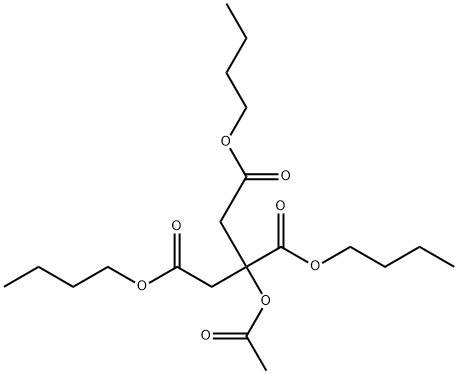

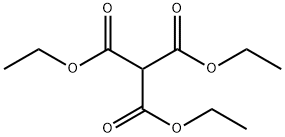
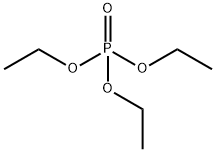

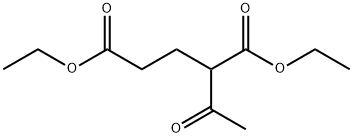

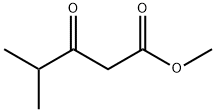
You may like
-
 77-88-4 Methyl Iodide (lodomethane) 98%View Details
77-88-4 Methyl Iodide (lodomethane) 98%View Details
77-88-4 -
 77-89-4 98%View Details
77-89-4 98%View Details
77-89-4 -
 Acetyl triethyl citrate 98%View Details
Acetyl triethyl citrate 98%View Details
77-89-4 -
 Triethyl acetyl citrate 99.00% CAS 77-89-4View Details
Triethyl acetyl citrate 99.00% CAS 77-89-4View Details
77-89-4 -
 Triethyl O-Acetylcitrate CAS 77-89-4View Details
Triethyl O-Acetylcitrate CAS 77-89-4View Details
77-89-4 -
 Acetyltriethyl citrate CAS 77-89-4View Details
Acetyltriethyl citrate CAS 77-89-4View Details
77-89-4 -
 Ethyl-2-Chloroacetoacetate 609-15-4View Details
Ethyl-2-Chloroacetoacetate 609-15-4View Details
609-15-4 -
 609-15-4View Details
609-15-4View Details
609-15-4
